
Pictures From Pinterest
What Is Decking ?
Decking typically refers to the process of building or installing a wooden or composite platform (deck) outdoors, often attached to a house. It’s commonly used as a space for outdoor activities, like dining, relaxing, or entertaining. Decking materials include wood, pressure-treated lumber, vinyl, and composite materials, with composite decking being particularly popular for its durability and low maintenance.
In a broader sense, “decking” can also refer to laying down or covering a surface with material, like in shipbuilding, where “decking” can refer to the floors or planks of a ship. But when most people mention decking, they’re talking about the outdoor structures.
Decking refers to the materials and structure used to create a deck, which is a flat surface or platform built outdoors. Here’s a quick breakdown of what decking involves:
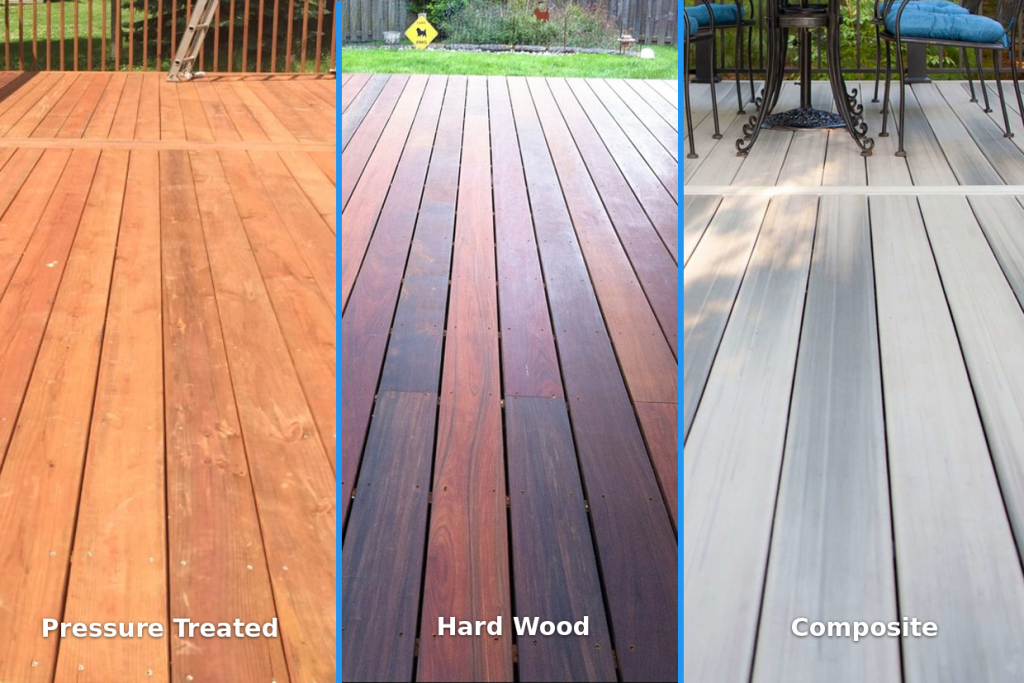
- Decking Materials
Common materials used are wood (like cedar or redwood), pressure-treated lumber, or composite materials (a mix of wood fibers and plastic), which are designed to resist weathering, stains, and damage.

- Purpose
Decks are typically added to outdoor spaces to enhance the home by providing an area for recreation, outdoor dining, relaxation, or even gardening. They’re often built in backyards, patios, or garden spaces.

- Installation
Decking usually involves laying down planks or boards supported by a framework of beams and posts. It’s important to choose the right material based on climate, usage, and how much maintenance you’re willing to do.
How To Choose The Best Decking Materials For Your New Deck?
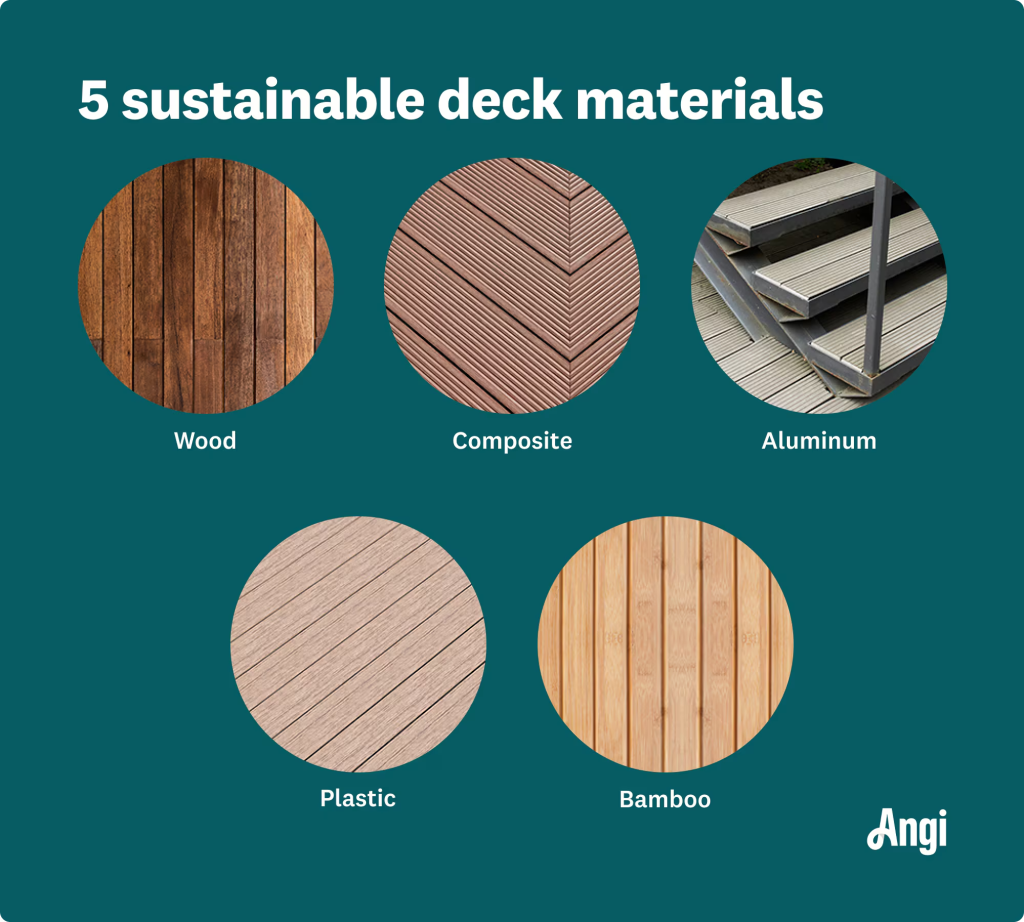
Picture from Google
1. Types of Decking Materials
- Wood Decking:
- Cedar/Redwood: Known for their natural beauty and resistance to decay, but they do require maintenance like staining and sealing to protect from weathering.
- Pressure-treated Lumber: Affordable and commonly used, it’s treated to resist rot and insects, though it can warp over time.
- Composite Decking:
- Made from a blend of wood fibers and plastic. It’s low maintenance, more durable than wood, and resists fading, staining, and mold.
- Popular brands: Trex, TimberTech, Fiberon.
- PVC Decking:
- Fully synthetic, made from plastic and is resistant to moisture, mold, and mildew. It’s often very low-maintenance but can get quite hot under direct sun.
- Aluminum Decking:
- Lightweight, durable, and resistant to corrosion. Ideal for areas with extreme weather conditions but can be expensive.
2. Decking Design
- Size and Shape: Decks can range from small, simple platforms to large, multi-level structures. You can add steps, railings, or even integrate built-in furniture.
- Surface Texture: Decking can have a smooth or textured surface. Some composite materials come with grooved sides for easy installation, while wood may need sanding for a smooth finish.
- Color Options: Wood decks can be stained to different shades, while composite decks come in a variety of colors, mimicking natural wood hues or in modern grays and browns.
3. Decking Installation
- DIY or Professional: If you have experience with construction, you can build a deck yourself, but it requires tools, precision, and knowledge of local building codes. Hiring professionals is a great option if you’re looking for a faster, high-quality result.
- Decking Frames: The framing system is essential, typically using pressure-treated lumber, as it supports the deck’s weight.
- Substructure and Footings: Proper foundation is crucial. Footings must be placed below the frost line to prevent shifting, and beams and joists are spaced to provide adequate support.
4. Maintenance
- Wood Decking: Requires periodic cleaning, sealing, and staining to prevent rot, splinters, and fading.
- Composite Decking: Easier to clean, often requiring just soap and water to remove dirt and debris, but over time it may show wear, especially in high-traffic areas.
- PVC and Aluminum: Both are generally maintenance-free, but aluminum may need occasional cleaning to prevent corrosion from saltwater in coastal areas.
Ideas Decking 2025
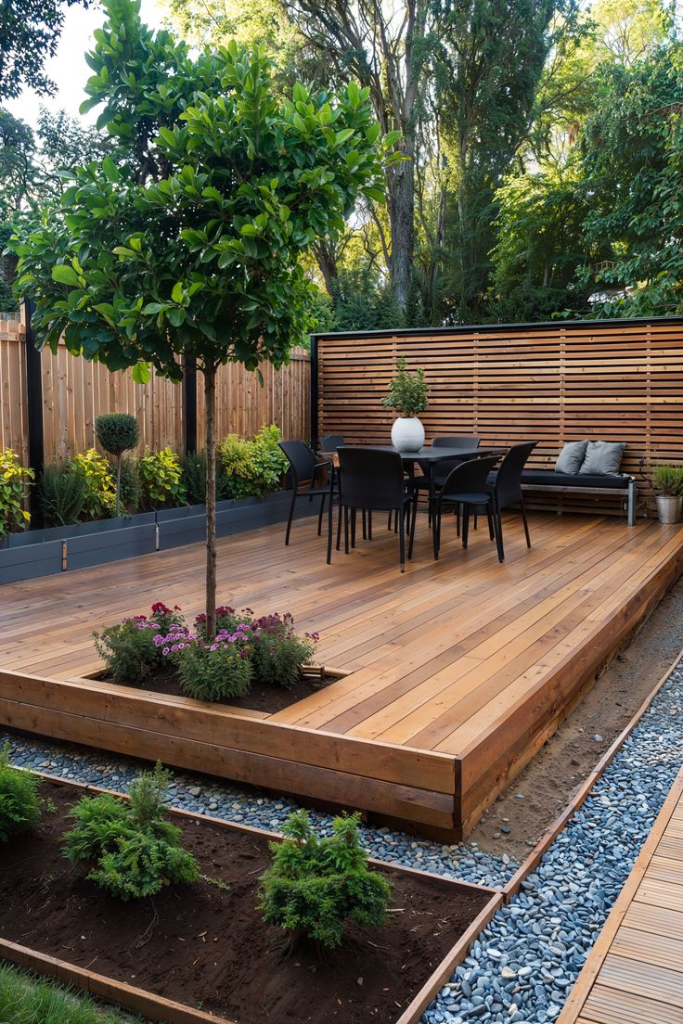




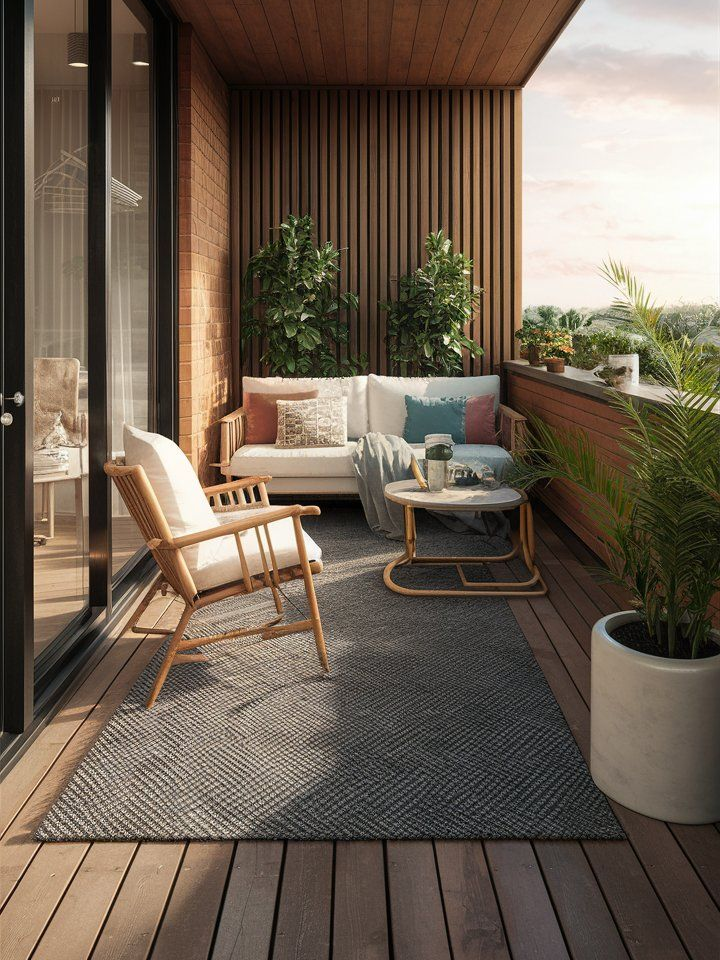
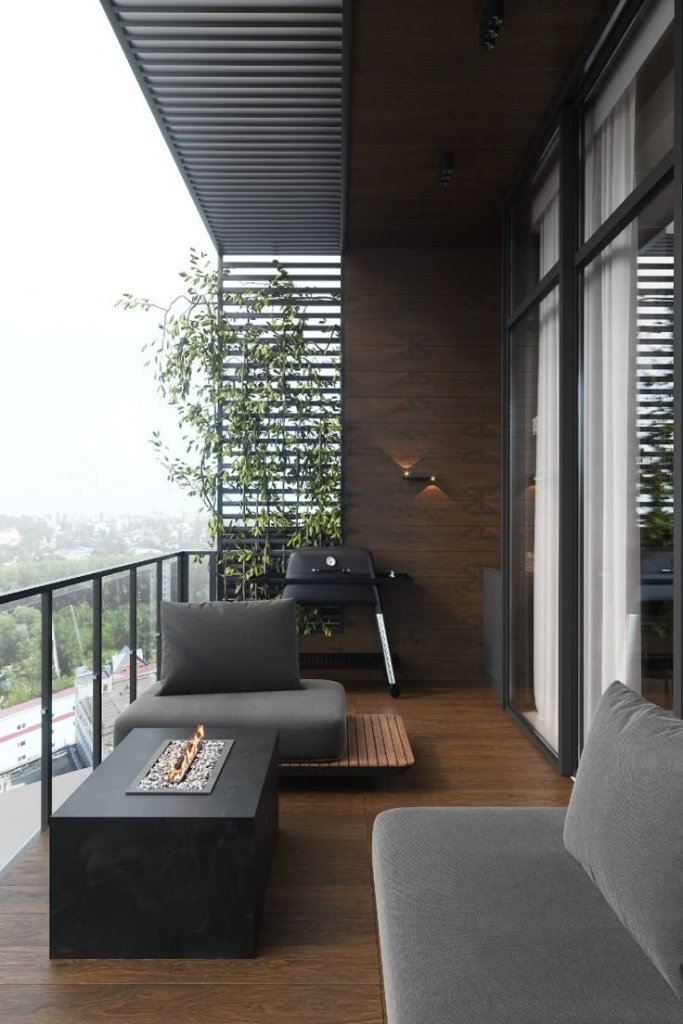
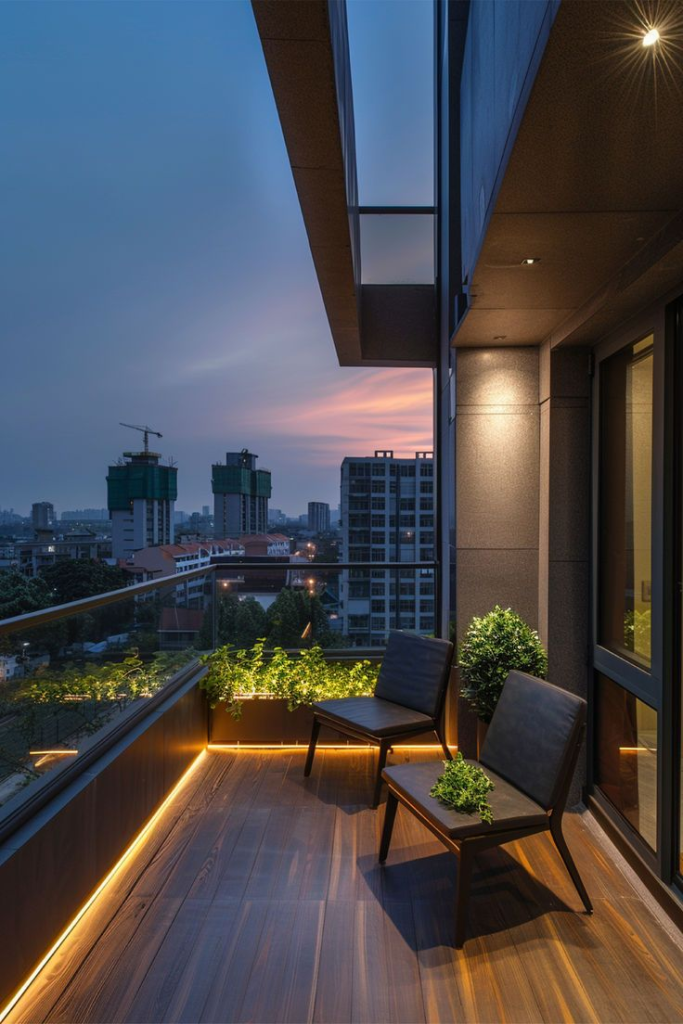
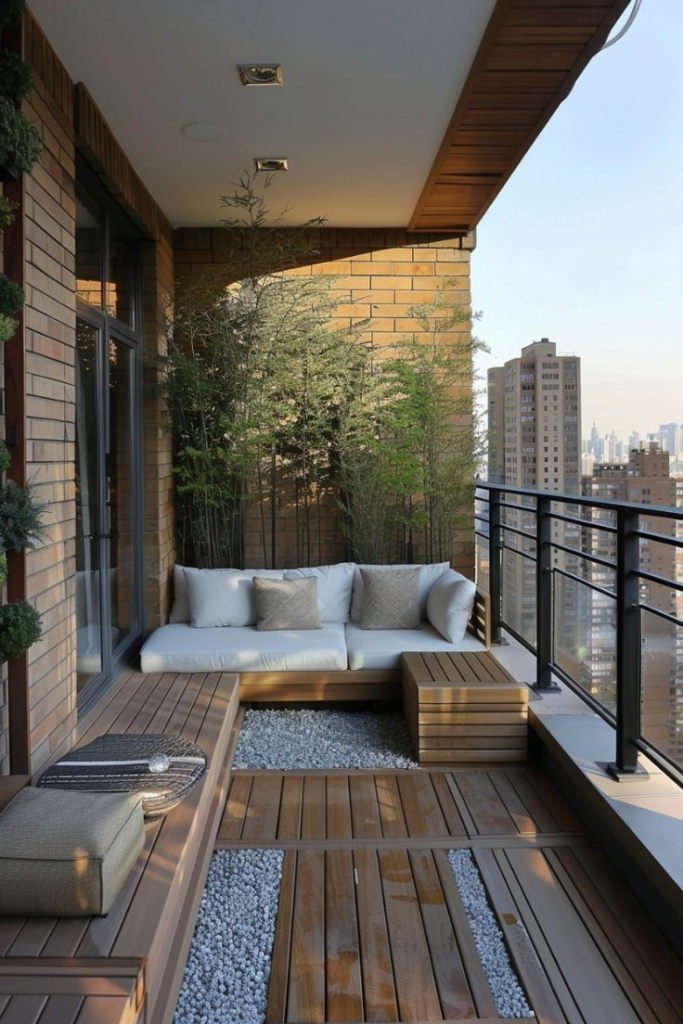
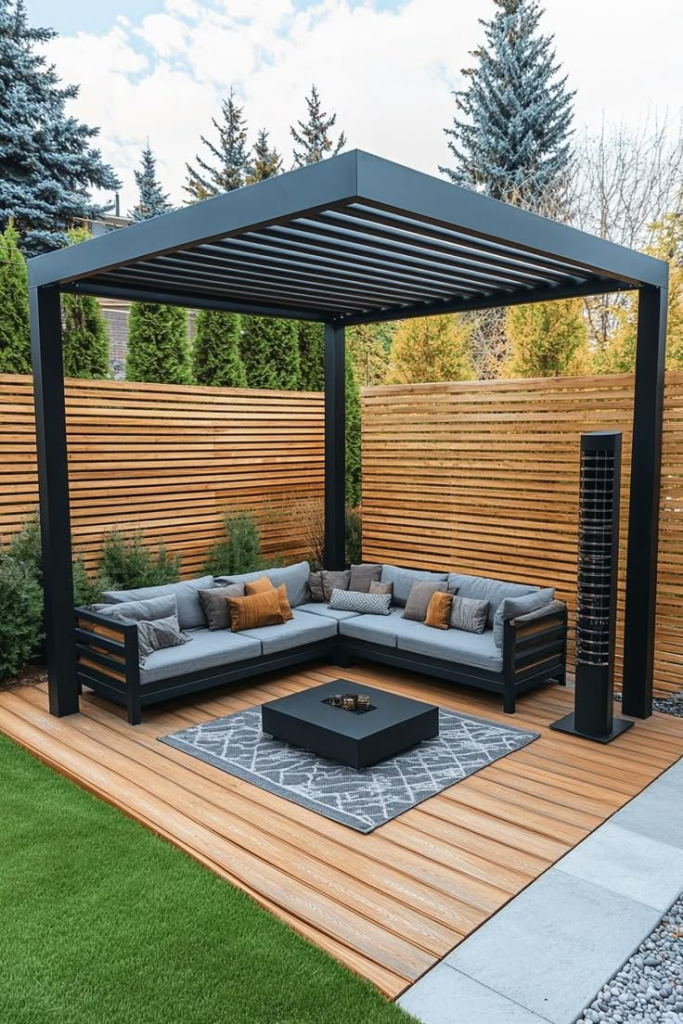
Conclusion
In conclusion, decking is a great way to enhance your outdoor space, providing a versatile, functional area for relaxation, entertaining, and enjoying nature. The choice of materials whether wood, composite, PVC, or aluminum depends on your budget, aesthetic preferences, and desired maintenance level. For more details can contact us now Click Here.
